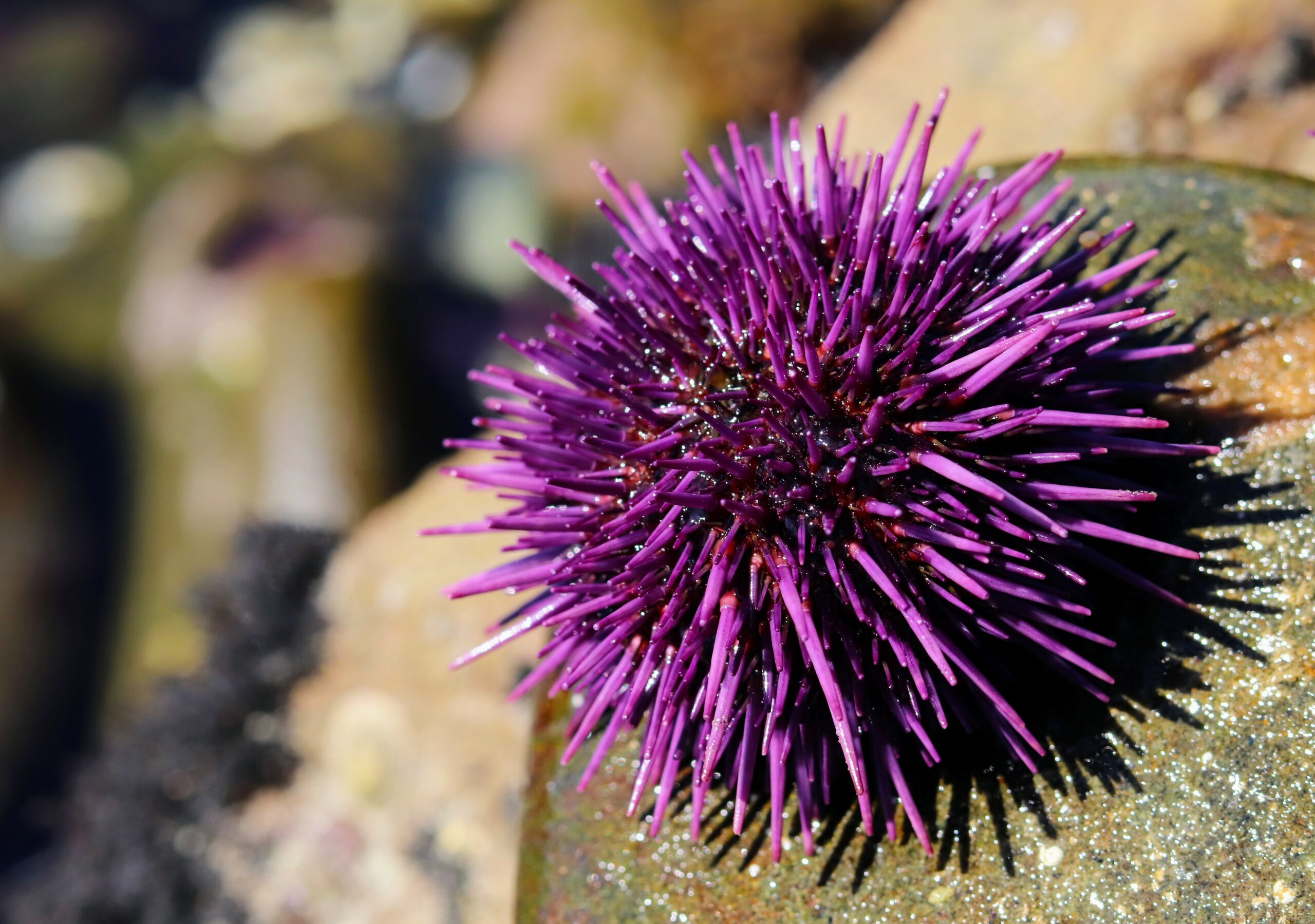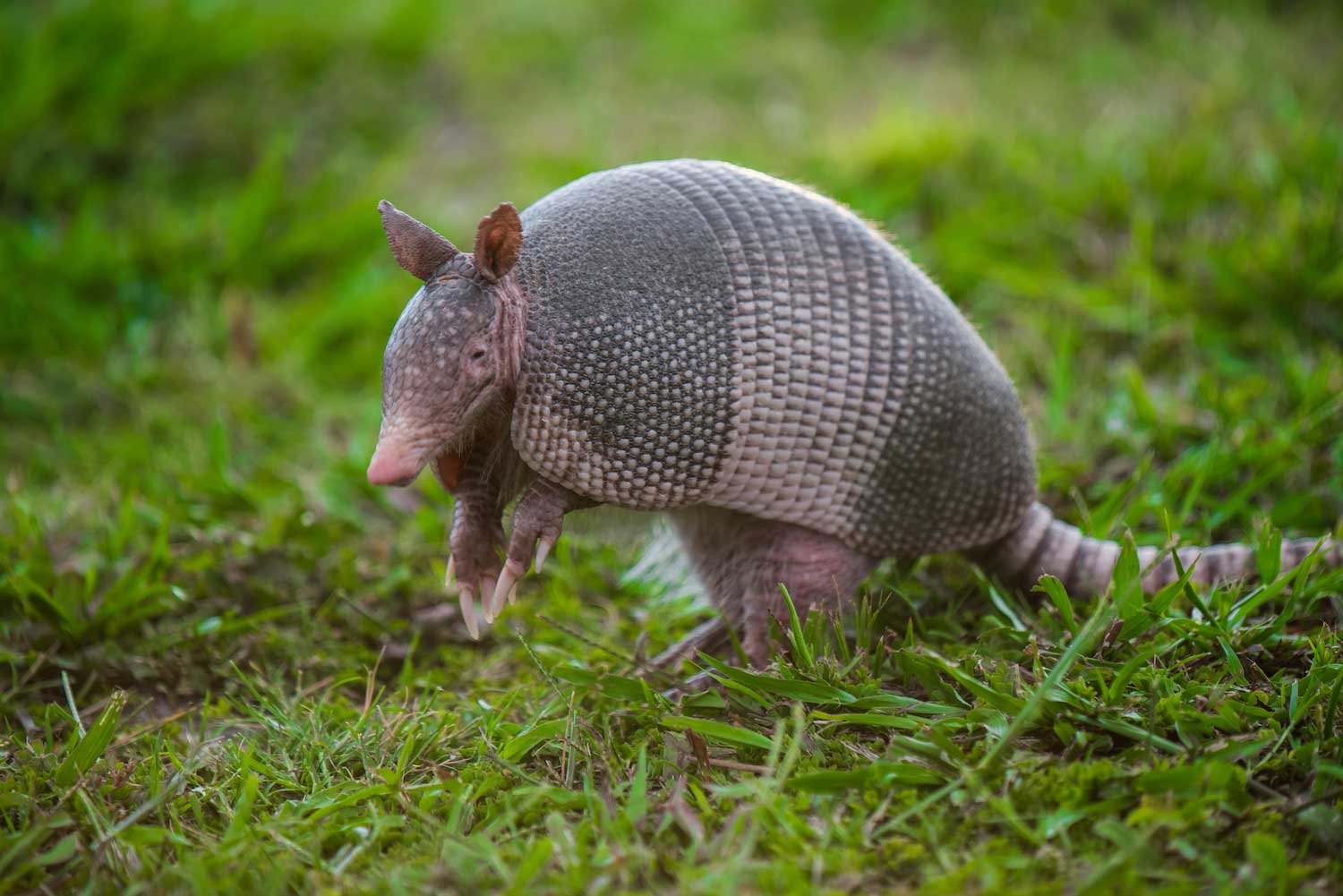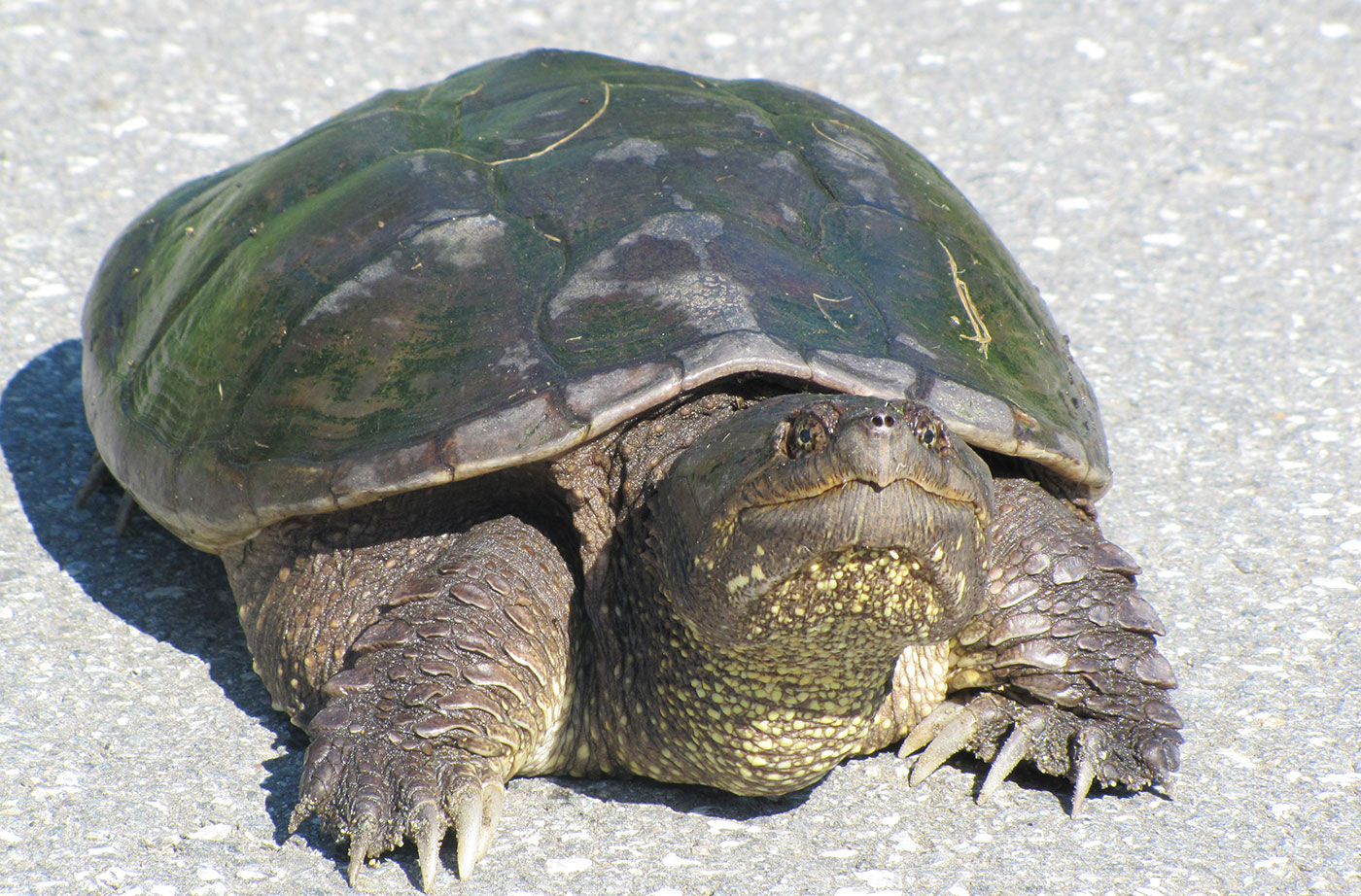Animals with shells are fascinating creatures that come in a variety of shapes and sizes. From land-dwelling tortoises to sea-dwelling mollusks, shells help house and protect animals from their environment.
Some animals have their shells built as a part of their skeleton, such as turtles, while others have external shells that they can retreat into for protection. Shells also help animals navigate their surroundings, much like whiskers on a cat.
You are reading: Top 10 Animals That Have Shells
In this article, we will explore the top 10 animals that have shells, including sea urchins, snapping turtles, and garden snails, among others.

Top 10 Animals That Have Shells
Sea Urchin

Sea urchins are fascinating creatures that belong to the class Echinoidea and are found in every ocean and inhabit every depth zone from the intertidal seashore down to 5,000 meters. They are spiny, globular echinoderms that have five-fold symmetry and move by means of hundreds of tiny, transparent, adhesive “tube feet”.
Sea urchins are covered with spines that they use for movement and defense. The spherical, hard shells (tests) of sea urchins are round and covered in spines. Most urchin spines range in length from 3 to 10 cm, with some species having spines up to 30 cm long. Sea urchins are one of the favorite foods of many lobsters, crabs, triggerfish, California sheephead, sea otter, and wolf eels. Sea urchin shells are also popular for crafts and decor.
Armadillo

Armadillos are New World placental mammals that belong to the order Cingulata and are part of the superorder Xenarthra, along with anteaters and sloths.
The name “armadillo” comes from the Spanish word for “little armored one,” referring to the bony plates that cover their back, head, legs, and tail.
Armadillos are the only living mammals that wear such shells. There are 21 extant species of armadillo, and they vary widely in size and color, from the 6-inch-long, salmon-colored pink fairy armadillo to the 5-foot-long, dark-brown giant armadillo. Armadillos are skilled diggers and eat insects and other invertebrates, and occasionally berries and bird eggs.
Armadillo shells have traditionally been used to make the back of the charango, a South American stringed instrument. Armadillos are also common roadkill due to their habit of jumping 3-4 feet vertically when startled, which puts them into collision with the underside of vehicles.
Snapping Turtle

Snapping turtles are freshwater turtles that belong to the family Chelydridae and are found in North America from eastern Canada and New England to the Rockies, and they are also found in pockets from Mexico and Central America to Ecuador. There are two species of snapping turtles: the common snapping turtle (Chelydra serpentina) and the alligator snapping turtle (Macrochelys temminckii).
Snapping turtles are known for their large size, aggressive nature, and powerful jaws. They have a rough upper shell, a small cross-shaped lower shell, a long tail, and a large head with hooked jaws. The female in both species lays clutches of 20 to 40 eggs; the young at hatching have shells about 2.5–4 cm (1–1.5 inches) long.
Snapping turtles are omnivorous and eat anything they can swallow, including many invertebrates, fish, frogs, reptiles (including snakes and smaller turtles), unwary birds, and small mammals. They are also active hunters that use ambush tactics to prey on their food. Snapping turtles are important aquatic scavengers and have long been valued as food.
Garden Snail
The garden snail, also known as Cornu aspersum, is a species of land snail in the family Helicidae. It is one of the most well-known terrestrial mollusks and is found throughout the world.
Garden snails have a flat, muscular foot that helps them move with a gliding motion aided by the release of mucus to reduce friction with the surface. They have a large, brown or yellowish shell with paler flecking and darker, spiraling bands.
Garden snails are nocturnal and come out at night to feed on leaves, algae, lichens, fungi, and rotting plant debris. They are also known to be garden pests and can be controlled with traps that use beer as bait.
Garden snails are hermaphrodites and can self-fertilize, laying around 80 white eggs in a damp, underground nest. The newly-hatched snails have fragile shells and take about two years to mature. Brown garden snails are also invasive species and can be found in many parts of the world, including the United States.
King Crab
King crabs are a taxon of decapod crustaceans that are chiefly found in cold seas. They are known for their large size and the taste of their meat, and many species are widely caught and sold as food, with the most common being the red king crab (Paralithodes camtschaticus). Red and blue king crabs are some of the most important fisheries in Alaska.
The two species are similar in size, shape, and life history, with habitat being the main factor separating the range of blue and red king crabs in the Bering Sea. Red king crabs prefer shallow, muddy or sandy habitats in Bristol Bay and Norton Sound, while blue king crabs prefer the deeper areas made up of cobble, gravel, and rock that occur around the Pribilof, St. Matthew, St. Lawrence, and Diomede Islands.
King crabs have a hard exoskeleton that protects their body and provides support for their legs and claws. The red king crab can grow very large, with carapace lengths up to 11 inches and a five-foot leg span. King crabs are also popular for their meat, and their legs are often sold in seafood markets.
Giant Clam
Read more : 10 Types Of Purple Fish To Own
The giant clam, also known as Tridacna, is the largest living bivalve mollusk and is found in the warm waters of the South Pacific and Indian Oceans.
There are several species of giant clams, but Tridacna gigas is the most commonly referred to as “the giant clam”. Giant clams can grow up to 4 feet in length and weigh more than 500 pounds. They have a hard, heavy shell that is covered in a mantle of soft tissue, which is often brightly colored and patterned.
Giant clams are filter feeders that take in plankton through a large, central opening and also have algae in their tissues that produce metabolic waste products, which serve as a second nutritional source.
Giant clams are considered a delicacy in some countries and are also sold on the black market as decorative accoutrements. Giant clams are also important for coral reefs, as they help maintain the health of the reef by filtering water and providing a habitat for other marine species.
Hermit Crab
Hermit crabs are fascinating crustaceans that belong to the superfamily Paguroidea and are found in almost all marine environments. They have adapted to occupy empty scavenged mollusk shells to protect their fragile exoskeletons.
There are over 800 species of hermit crab, most of which possess an asymmetric abdomen concealed by a snug-fitting shell. Hermit crabs’ soft (non-calcified) abdominal exoskeleton means they must occupy shelter produced by other organisms or risk being defenseless.
Hermit crabs have reduced gills, and their moist gill chambers have highly vascularized areas for gas exchange. They have stalked eyes with acute vision, and two pairs of antennae. They use the longer pair for feeling and the shorter, feathery pair for smelling and tasting.
Hermit crabs are omnivorous and eat a variety of foods, including algae, detritus, and small animals such as snails and other hermit crabs. They are also popular pets, but do not breed in human care. Here are some interesting facts about hermit crabs:
– Hermit crabs can live up to 10 years.
– They can grow up to 6 inches long.
– Hermit crabs live on land, not in water, but do require water and moisture in order to replenish.
– Hermit crabs wrap their soft abdomen around the inside of the shell to firmly hold themselves in place.
– Hermit crabs are always searching for a larger shell to borrow and will sometimes steal a shell from a smaller hermit crab.
– Hermit crabs lack a shell, so they will use an empty one that originally belonged to another animal, such as a snail, periwinkle, or oyster drill.
– Hermit crabs have two pairs of walking legs.
– Hermit crabs are small crustaceans that lack a shell and must “borrow” one from another animal.
– Hermit crabs, worldwide in distribution, occur in sandy- or muddy-bottomed marine waters and occasionally on land and in trees.
Gopher Tortoise
The gopher tortoise (Gopherus polyphemus) is a species of tortoise in the family Testudinidae and is native to the southeastern United States. They are seen as a keystone species because they dig burrows that provide shelter for at least 360 other animal species.
Gopher tortoises are long-lived reptiles that occupy upland habitat throughout Florida, including forests, pastures, and yards. They dig deep burrows for shelter and forage on low-growing plants.
Gopher tortoises share their burrows with more than 350 other species and are therefore referred to as a keystone species. The gopher tortoise is relatively small, about 9-11 inches long and 10 pounds fully grown, but can live to be over 90 years old. They have large, elephantine hind limbs and flattened, shovel-like forelimbs that are uniquely designed to dig burrows up to 40 feet long and 10 feet wide.
The gopher tortoise is listed as Threatened in Florida, and both the tortoise and its burrow are protected under state law.
Chambered Nautilus
The chambered nautilus (Nautilus pompilius) is a species of cephalopod that is known for its unique, spiral-shaped shell. Here are some interesting facts about the chambered nautilus:
– The shell of the chambered nautilus is lined with lustrous nacre and displays a nearly perfect equiangular spiral.
– The shell of the chambered nautilus is not a golden spiral, but it is often used as an example of the golden spiral in mathematics.
Read more : 9 Types Of Toothed Whales
– The shell of the chambered nautilus exhibits countershading, being light on the bottom and dark on top.
– The shell of the chambered nautilus fulfills the function of buoyancy, which allows the nautilus to dive or ascend at will, by controlling the density and volume of the liquid within its shell chambers.
– The chambered nautilus is a highly vulnerable species because of its life history characteristics, including low reproductive rates, slow growth, and late maturity.
– The chambered nautilus is primarily targeted for its shell, which is sold commercially and traded internationally for use in art, furniture, jewelry, and other items.
– The chambered nautilus is both an active predator and a scavenger, and typically hunts for benthic crustaceans or other invertebrates.
– The conservation status and population trends of the chambered nautilus are not well known, as there is little data on numbers of individuals or populations.
The chambered nautilus is a fascinating creature that has captured the attention of scientists and mathematicians alike. Its unique shell and behavior make it an important species to study and protect.
Longhorn Cowfish
The longhorn cowfish, also known as the horned boxfish, is a species of boxfish from the family Ostraciidae. Here are some interesting facts about the longhorn cowfish:
– The longhorn cowfish is recognizable by its long horns that protrude from the front of its head, rather like those of a cow or bull.
– They are a resident of the Indo-Pacific region and can grow up to 50 cm (20 in) long.
– The body of the longhorn cowfish is tan to yellow and covered with white and blue spots.
– Longhorn cowfish protect the coral reefs they live in by being predators of the invertebrates that destroy the reefs.
– They are also important in the growth and creation of coral reefs for this same reason.
– Longhorn cowfish are omnivores and feed on benthic algae, various microorganisms, and foraminiferans that they find in sediments, on rocks, and on coral.
– The longhorn cowfish is found in the Red Sea and tropical Indo-Pacific.
– According to the IUCN, the longhorn cowfish is categorized as “Not Evaluated”.
The longhorn cowfish is a unique and interesting species that plays an important role in protecting and creating coral reefs.
FAQS
1. What is the purpose of shells for animals?
Shells serve as protection for animals from predators and environmental factors, and help them navigate their surroundings.
2. What are some other animals with shells?
Other animals with shells include shrimp, bivalve mollusks such as clams and snails, cockroaches, bugs, and mantis shrimp.
3. How do hermit crabs protect themselves?
Hermit crabs protect themselves by occupying empty scavenged mollusk shells to protect their fragile exoskeletons
4. What is the conservation status of the chambered nautilus?
The conservation status and population trends of the chambered nautilus are not well known, as there is little data on numbers of individuals or populations.
5. What is the purpose of multiple hearts in animals?
Animals that have multiple hearts typically evolved separate hearts to perform different functions. Rather than evolving one heart to fulfill all of the circulatory system’s essential duties, these animals developed specialized hearts to take on individual assignments
6. What is the purpose of the longhorn cowfish’s horns?
The longhorn cowfish is recognizable by its long horns that protrude from the front of its head, rather like those of a cow or bull.
Source: https://petstutorial.com
Category: Animals










